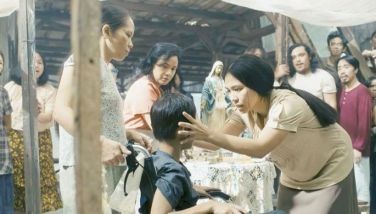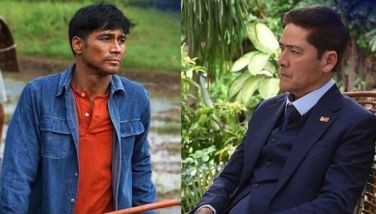Forgotten indie recovered 41 years later in NY
This is a story that actually began in the late ’60s after we had left the Manila Times publications to join ABC Channel 5, its broadcast arm. Those were exciting times when television was still in its infancy and Channel 5 was a David battling huge stations and succeeding to the amazement of everyone.
Station manager at that time was the innovative devil-may-care Ramy Diez, who only stayed long enough at his post to leave footprints one would never forget. It was during his stint at Channel 5 that the station had rocketed to become the leading news and public affairs channel with Antonio Tecson as head of the newsroom. Jose Mari Velez anchored The Big News which won awards yearly. Doroy Valencia’s Over A Cup of Coffee, Max Soliven’s Impact and Ninoy Aquino’s Insight were the top commentary talk shows. Lupita Concio was harvesting the success of Balintataw. It was possibly the best times of our life, when one was young and adventurous, and there was nothing too difficult to attain.
Ramy taught us everything we learned in broadcast and gave us the best breaks together with photographer Romy Vitug who, like us, was a newbie in television, having come from the print medium.
In the station’s first documentary film in full color, we worked on The Rites of Summer celebrating the many colorful Holy Week practices around the country. It was a huge and fulfilling success, which left Romy, already a name in still photography, and us hungering for more.
 Life must move on to fill up all the emptiness of evening
Life must move on to fill up all the emptiness of evening On two separate Sundays in 1968, carrying a borrowed 16mm Bolex camera, short ends and contributed black and white film stock, we set out for Navotas, which at the time was Romy’s favorite hunting grounds for the black and white poetic images he would record on still camera. This time, however, he was to recreate on film, the story of people whose lives and deaths, joys and sorrows, were inexorably chained to the sea.
We were joined on these trips by Emmanuel “Eric” Torres, poet, art critic and professor of English and Comparative Literature at the Ateneo de Manila, and curator of the Ateneo Art Museum, who wrote the script for the film.
Post-production was something else we hadn’t adequately prepared for, with equipment more difficult to borrow, but we were determined. Romy had a friend who donated the positive stock to print our short ends. With a magnifying glass held up against the light, we recall laying on the floor editing this material and patching it up with tape. A generous photographer/editor put the final touches on his Moviola machine. We now needed to record narration and music.
 Death will not answer ‘Who are we? Where are we going?’
Death will not answer ‘Who are we? Where are we going?’ We called Michael Dadap to put in the music. Michael then was already a popular guitarist, composer, and conductor, and an influential advocate of Filipino folk music. He would later migrate to the US, where he would establish a world-class rondalla ensemble and the Iskwelahang Rondalla in Boston, Massachusetts. Ray Pedroche, among the pioneers of early radio and later chief executive at RPN-9, recorded the narration Eric wrote. We couldn’t believe we were done without having to pay anyone.
Someone had told us there was a film archive in New York and we decided to mail the film. We no longer remember the details but after the mailing, we promptly forgot about the film. Flash forward to 2010 during our first visit to New York in a long, long time. Through the Internet prowess of our secretary Genie Dalit Aldea, she managed to trace an entry made out to Bibsy Carballo of a black and white film called Recuerdo of Two Sundays and Two Roads that Lead to the Sea. We went to the address given of The Film-makers’ Coop and voila, the film was there, safely filed in its original tin can.
M.M. Serra, Film-makers’ Coop executive director, advised us to have the original film transferred to DVD which we did. We left our original Recuerdo in her safekeeping knowing full well that if she had cared for it these past 41 years free of charge, then there couldn’t be any better place in the world for it.
 Bearing with the humdrum rhythm of a life of touch and go
Bearing with the humdrum rhythm of a life of touch and go Recuerdo of Two Sundays and Two Roads that Lead to the Sea, 1969, is part of the Focus on “Early Indies” that includes the opening film, Nick Deocampo’s Let this Film Serve as a Manifesto for a New Cinema, 1990, and Raymond Red’s Ang Magpakailanman, 1983. Screening is at the CCP Dream Theater on Monday, July 23 at 3:30 p.m. For other films and more details, contact Cinemalaya through the CCP Film Office at tel. 832-1125 local 1704/05 and the CCP Box Office at 832-3704 or visit www.cinemalaya.org. Recuerdo is available for screening in schools. Call 0917-8991835.
(E-mail your comments to [email protected].)
- Latest
- Trending





























 Exclusive
Exclusive



